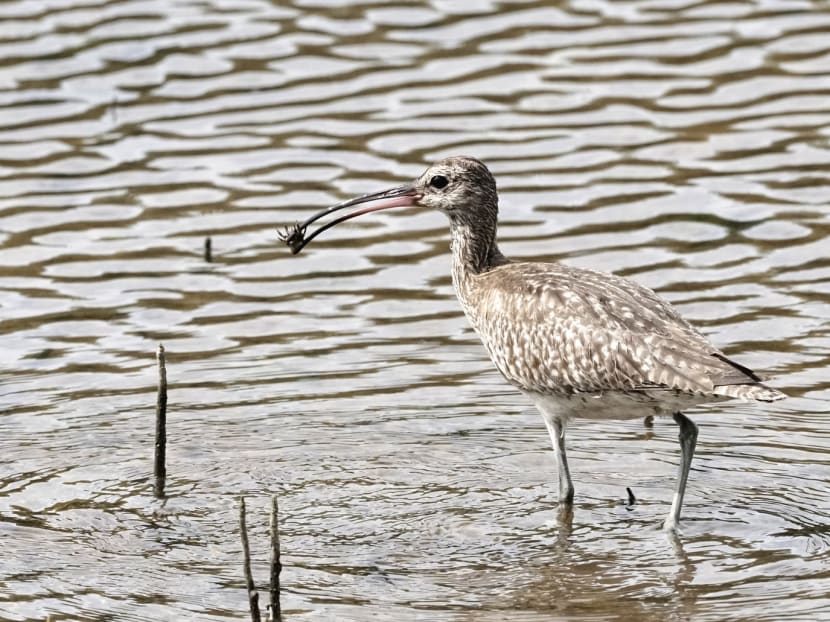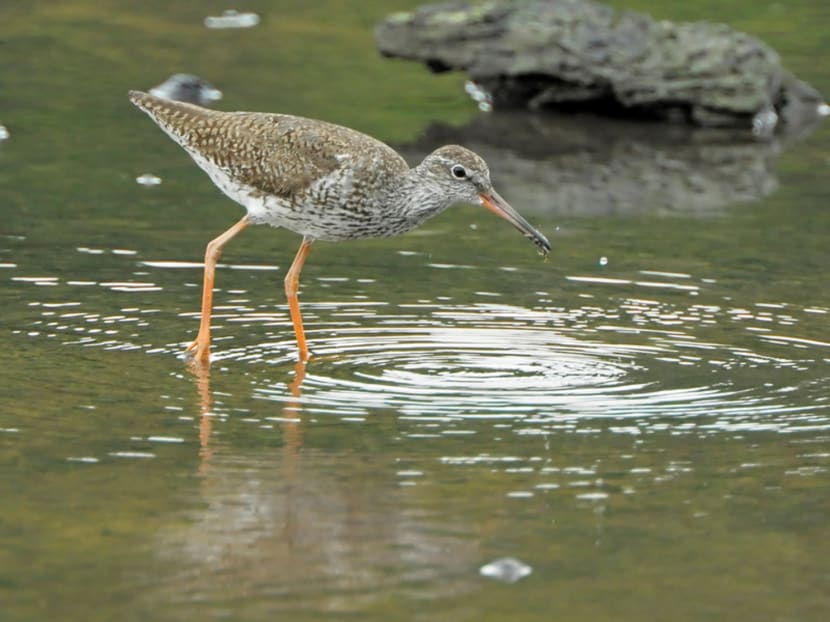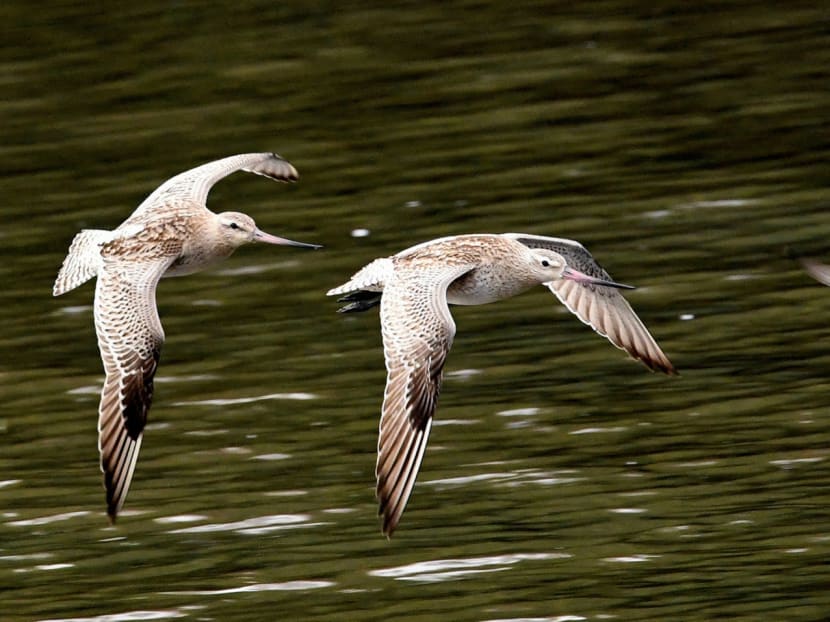Satellite tracking of migratory birds to take flight this year
SINGAPORE — The National Parks Board (NParks) will launch a two-year project this year to find out more about the lives of 22 shorebirds via satellite tracking.



SINGAPORE — The National Parks Board (NParks) will launch a two-year project this year to find out more about the lives of 22 shorebirds via satellite tracking.
The solar-powered satellite tracking devices, weighing 5 or 9.5g each, will be attached to birds such as Whimbrels, Common Greenshanks, Bar-tailed Godwits and Grey Plovers to find out where they travel to and stop.
The results will increase the effectiveness of conservation along the pathways used by these migratory species, said NParks.
Singapore is one of 22 countries along the East Asian-Australasian Flyway (EAAF), which extends from the Arctic Circle through East and South-east Asia to Australia and New Zealand.
Among the world’s nine recognised flyways, the EAAF supports the greatest diversity and populations of migratory birds — over 50 million from over 250 populations — but has the highest number of threatened migratory species.
In Singapore, some migratory birds stay throughout the northern winter, while others use the country as a springboard for the next leg of their journey. The tracking devices will provide researchers with more precise and accurate information.
As the devices should weigh no more than 3 per cent of a bird’s weight to limit the burden imposed on the animal, only certain species can be tracked. The 9.5g devices will also be used only on larger birds such as the Whimbrel and Bar-tailed Godwit, said NParks senior conservation officer David Li.
The devices also do not entail recapturing the tagged animals, unlike a battery-powered device called a geolocator, which NParks used on 99 Common Redshanks between 2014 and last year.
The geolocators weighed 1g and cost over S$200 each, said Mr Li. Between September 2015 and March last year, seven of the tagged birds were recaptured, and data from the geolocators revealed previously unknown information about them.
The Common Redshank’s breeding areas are spread far out, from Tibet and Xinjiang to Mongolia and Russia.
Through the geolocators, NParks learnt that two major stopovers of the Common Redshanks found in Singapore, were the coasts of central to southern Thailand to south-eastern Myanmar, as well as Sichuan province in China.
Data suggested that the adults bred in the Tibet-Qinghai Plateau, while the recaptured juveniles remained mostly in Singapore and travelled up to Thailand.
“Earlier, we didn’t know where our birds went ... With this study, we can see there are a few major stopovers,” said Mr Li. “So probably, we can, when opportunities arise, work with agencies there.”
The geolocators record data such as light, temperature, wet and dry conditions and the conductivity of water (to tell if the birds are in saltwater or fresh water), which experts then interpret.
For instance, the light logger can tell experts if the bird is incubating, and for how long.
Bird-ringing has also grown more sophisticated: Green-over-white flags began to be used from 2003 to indicate the birds were ringed and flagged in Singapore.
And in 2012, engraved alphanumeric characters on the flags were used to give each captured bird a unique identifier. Between 1990 and 2015, Sungei Buloh Wetland Reserve ringed more than 11,000 birds from 142 species.
About 2,000 migratory shorebirds roost and feed in its 130ha area each year and 254 bird species have been recorded there, of which 123 are migratory species and 34 are known to nest in the Arctic region.
Despite many species’ numbers being on the decline in the EAAF, the populations of some species such as the Whimbrel and Common Greenshank have been stable at Sungei Buloh.
NParks has also recaptured and observed birds banded nearly two decades ago, gaining important information on the longevity of their species. Among other ways, NParks helps migratory birds by clearing overgrown vegetation on raised embankments in brackish ponds, as some birds prefer to roost on higher ground.






